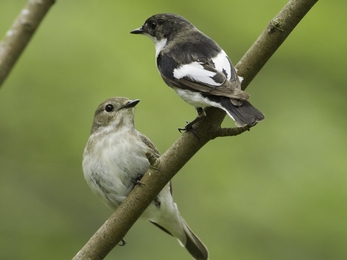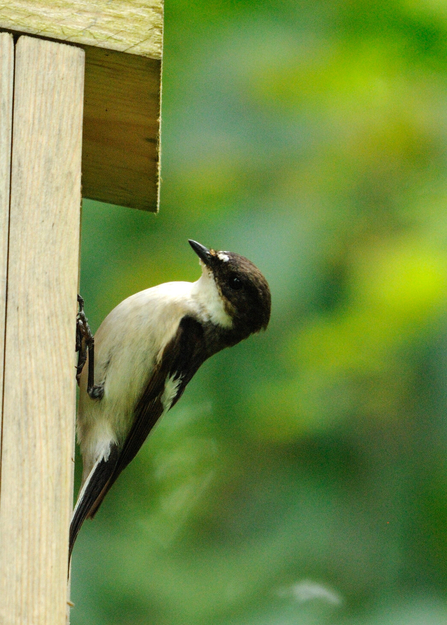Before they start the busy time of nesting and raising young, the Pied flycatcher could be excused a small rest. It will have just completed an 8000km journey from its wintering grounds in the wooded savannah of western Africa (Sierra Leone, Liberia and Guinea). Having started with a single flight of 40 hours to cross the Sahara - it eventually arrives in our woodlands in mid-April.
The black and white males arrive several days before the brown and white females and their first task will be to find a territory, start singing and attract a mate. Territory for this flycatcher is typically mature deciduous and mixed woodland, with Oak (Quercus spp) predominating; but they will also use riparian Alder (Alnus spp) streams. In Shropshire this confines them to the North-West uplands around Oswestry, the uplands of the Stiperstones and around Church Stretton, along the River Clun into the Clun Forest; with smaller restricted populations elsewhere.


